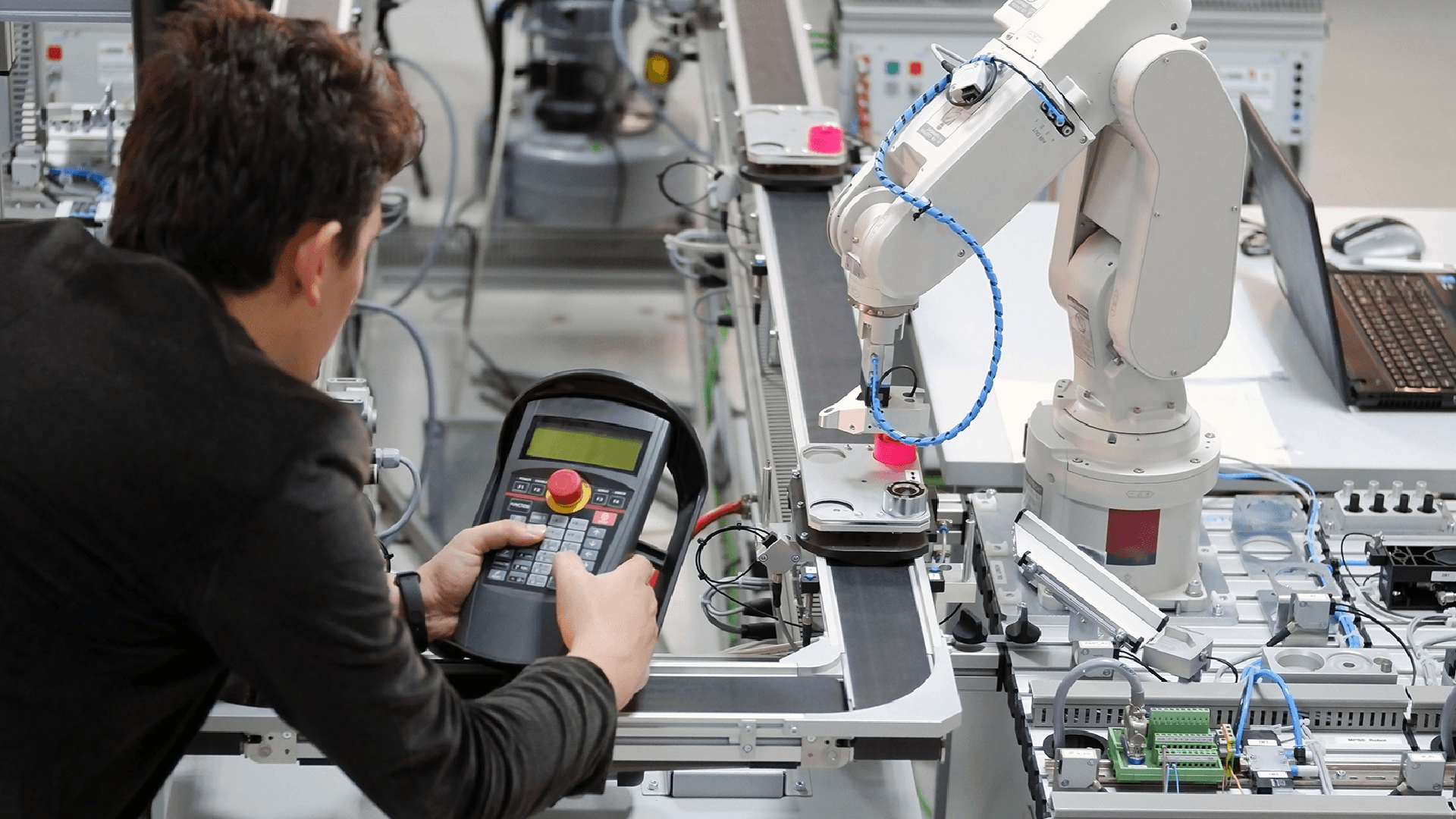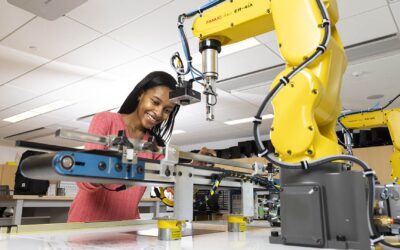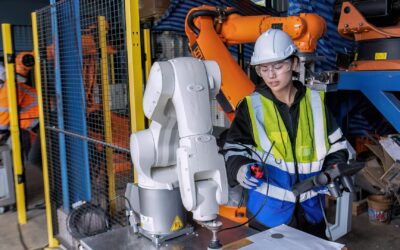Today’s manufacturers are in a bind. Demand for a new breed of “smart” electronics, fueled by everything from innovations in IoT to autonomous vehicles is driving up factory orders – way up. Great news, of course, unless you can’t fill those orders efficiently.
The manufacturing industry is experiencing one of the worst labor shortages in its history. According to research conducted by Deloitte and The Manufacturing Institute, “over the next 10 years, manufacturers will likely need to add 4.6 million manufacturing jobs – 2.4 million of which may go unfulfilled. It’s already happening. Today more than 500,000 manufacturing jobs remain vacant in the U.S.”
With the labor shortage deepening, and the stakes for not meeting orders escalating, the time is right for manufacturers to take a fresh look at automation. And you might be pleasantly surprised: a lot has changed recently in manufacturing automation – the versatility of the hardware, the flexibility of the software running it, and the ROI math you need to justify it.
Modular Hardware
One of the big knocks on first-generation automation hardware was its rigidity – customized for a single manufacturing process or intent, these automation solutions required a long product time horizon (think 2 years-plus) and high-volume output to warrant their expense. Fortunately, automation – especially for electronic product assembly and inspection tasks – has progressed.
Equipment that automates these tasks has evolved from “single use” design to one embracing the concept of “re-use,” where one machine or set of machines is capable of making many different products. While re-use is a familiar concept at the “front of the line,” for example in surface mount technology (SMT) machines, it is now ready to take on “back of the line” processes in assembly and inspection.
At the core of this evolution lies the shift to a modular hardware approach supported by software-defined manufacturing. This combined approach provides a ready antidote to expensive, long-to-deploy, single-use automation solutions.
Modular automation takes standardized hardware building blocks and couples them with standardized software “recipes” (instructions) and a wide range of plug-and-play end-of-arm accessories, making it easy to reconfigure the equipment to perform many tasks, including soldering, pick and place, labeling, screwdriving, spot welding, press fit, bar-code reading, and more.
Modular’s New Math
The result of this modular hardware + software-defined manufacturing approach is a new kind of automation that implements in half the time of fixed, custom solutions, while extending hardware life by at least 2X. Legacy automation solutions used to require product runs of at least 2-3 years, often taking as much as half that time to implement. A modular automation approach typically delivers ROI in 12-14 months, while extending equipment life to 5-7 years!
With radically faster implementation times, newfound flexibility (through re-use), and dramatically longer equipment lifecycles, the new math of modular automation is re-writing the rules of when and where electronics manufacturers can automate. Following are some recent examples:
Case Study 1: Heatsink Assembly
A leading networking equipment manufacturer struggled to automate its heatsink assembly line because of many different product configurations. The company used seven manual stations to manage 15 different product variations and 11 different heatsinks. Worse yet, it knew the market wanted even more variation, which would further strain its manual approach.
Turning to modular automation, the manufacturer now handles all product variants with a minimal one-push changeover leveraging software that can easily change the manufacturing “recipe” to reconfigure the solution to accommodate new heatsinks of different sizes.
This modular automation approach also delivers in-process quality controls that verify component serial numbers to confirm recipe alignment, then component quality and physical alignment, through machine vision.
Modular automation has delivered this manufacturer the following results:
- Switched from building one product variation to another in as little as five seconds.
- Reduced human operators from seven to 0.5 per shift.
- Consolidated seven stations into one.
- Improved quality and production stability versus the previous manual approach employing human operators.
- Achieved higher throughput, decreasing Takt time from 20 to 15 seconds, which resulted in producing 240 units per hour – up from 180 – a 33 percent jump!
Case Study 2: Plastic Component Assembly
This global leader in single-cup coffee makers struggled to maintain a workforce with enough operators to meet growing demand. The company turned to modular automation, supported by software-defined manufacturing, to optimize the production steps involved in the assembly of two plastic components used in its coffee maker.
Today, in the first of three robotic cells, machine vision guides a robotic arm to pick and place two plastic components, where they are properly aligned then screwed together. Advanced techniques are used in cells two and three to control the angle of insertion and torque applied to perform additional screwdriving operations on the plastic components.
Not only has this modular automation approach reduced the number of human operators required for this assembly, but it has also delivered a consistent, high-quality process that never wavers. Success metrics include:
- A reduction of human operators per shift from five to 0.5, eliminating an entire shift and providing the flexibility to use the extra shift strategically to handle unexpected demand surges and seasonal requirements.
- A 38% improvement in yield.
- A turbocharging of throughput from 120 units per hour to 180, reducing Takt time from 30 to 20 seconds.
Conclusion
Limitations of first-generation automation solutions – time to implement, cost, single use, front-of-line only – made it hard for many manufacturers to take the automation plunge, turning instead to creative staffing, hustle and hope to meet growing demand. Now, with modular automation, the math is on your side to make return on automation investment “automatic,” and your manufacturing line as agile, flexible, and innovative as you need it to be.
Stevan is a product marketing technology innovator who’s spent the last two decades collaborating with Fortune 500 OEMs in automotive, factory automation, building automation, home appliances, medical, and energy management. He’s worked in a variety of design and marketing roles for embedded electronics leaders and is currently Product Marketing Director at Bright Machines helping bring software-driven product assembly to build the next generation of products. Stevan holds master’s degrees in physics and business administration.




